If it’s been a while since you searched for a new job, you might be wondering how to update your resume in the fastest and most efficient way. And you might even be feeling a little intimidated by the task!
I’m here to tell you that it doesn’t need to be difficult.
In fact, if you follow just a few simple steps, you’ll be well on your way to getting your resume done in no time!
Let me encourage you first that writing or updating your resume is not rocket science. While some things have changed over the years (like the need to incorporate keywords), most things have stayed the same.
And there are a few tips and tricks I’m going to share with you that will make your resume stand out from the rest.
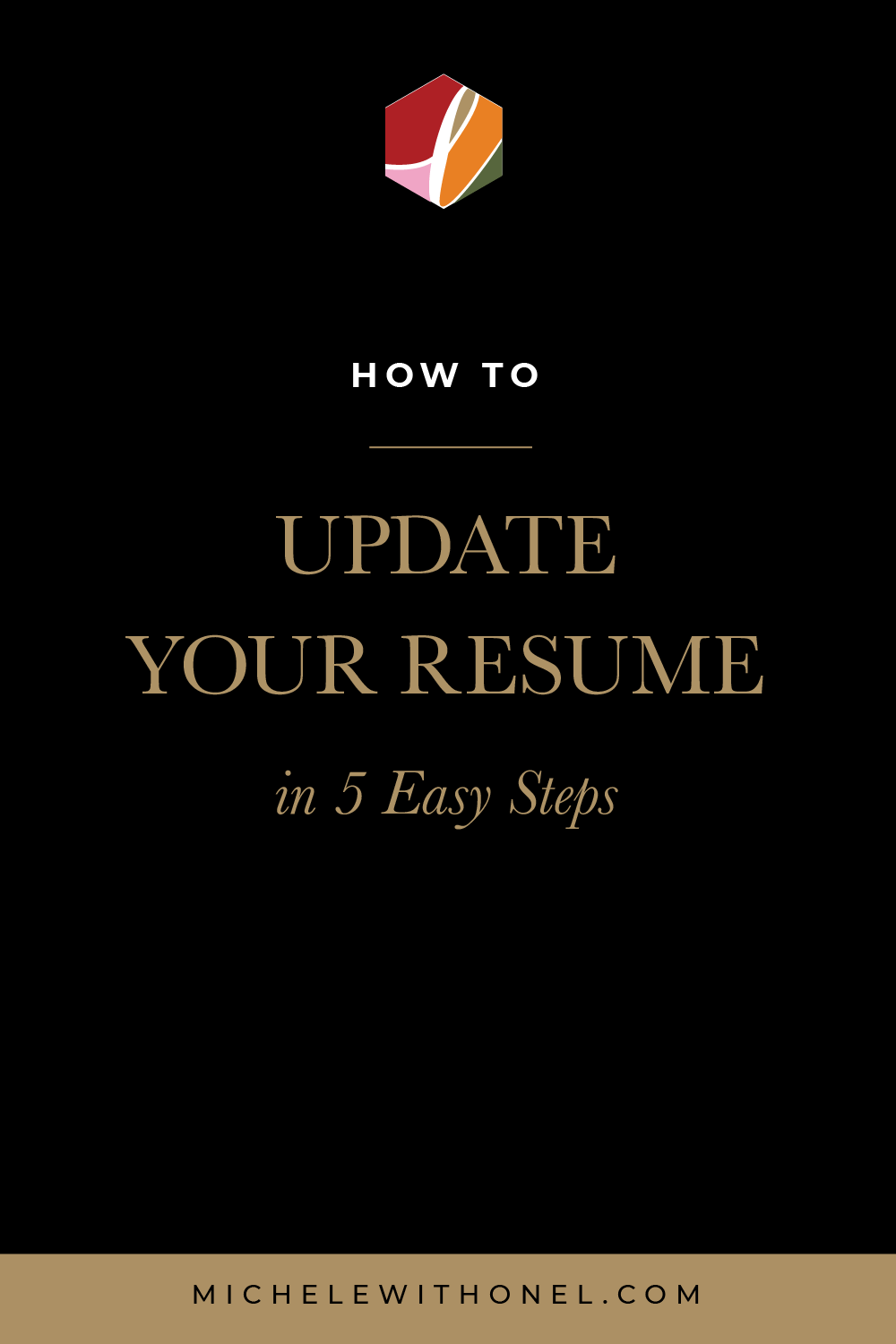
How to Update Your Resume Tip #1: Compile Your History
The first and most difficult part of resume writing is getting together all of your history.
I suggest doing this all at once, on a few pieces of paper or, even better, digitally in a document you can save for future reference.
You’re going to want to compile your work history, including company names, locations, job titles, and dates of employment (month and year). For each job, be sure to include what you did for the company and list any achievements you can think of.
You’ll also want to gather your education information and any additional schooling you’ve received.
Finally, put together a list of qualities and skills you’ve put to use in jobs you’ve had in the past, especially ones you think will continue to serve you in the future. Include any awards you’ve won, or accolades you’ve received from managers, customers, or co-workers.
You’ll go back later to curate this information (and create bullet points that will make you stand out like a rock star!), but for now, the important thing is to get all of the information together in one place.
Resume Writing Tip #2: Do Your Research
Next, you’re going to research the job you’re applying for, reading through the job description to look for the qualities and qualifications that your new employer is looking for.
You’re also going to look for keywords, which are almost always in the job description itself. Think of a keyword as a search term — a high level word or phrase that your future employer is searching for. Since they are looking for these in a candidate, they’ll expect to see them in a resume.
I recommend searching for additional job posting at similar companies, so you can review the qualities and keywords they are using too. This can help make your resume stronger because you’ll be more informed about how other companies see the same position.
Once you’ve compiled these two types of information — your history and the information in the job postings, you’ll be ready to sit down and write your resume!
Updating Your Resume Tip #3: Tips for Writing
The best way to start your resume is by using a resume template in whichever word processing software you prefer — Google Docs, Microsoft Word, or Apple Pages.
You’ll set up your resume as a single column, with black type only (who knows if the hiring manager even likes green?).
Here are the sections you’ll include in your resume:
At the top, centered (and without a title)
- Contact information: This untitled information includes your name, address, phone number, and a professional email address. Bold your name and include the rest of the information in 3 lines in normal, unbolded type.
- Overview: A 3- to 5-word description of the job you’re applying for. Bold and center this on its own line two spaces below your contact information.
These four sections of your resume are titled and left-justified:
- Summary: This section summarizes the qualifications you have that make you a great candidate for the position you listed in the overview.
You’re writing this section with your future job in mind.
The goal here is to catch the recruiter’s eye and make her want to spend more time reading your resume. - Work Experience: The most important part of your resume, this section will include your most recent and relevant employment. Include 6-8 bullet points for your most recent job, then 4-6 for the second most relevant job, and only 3-4 bullets for older positions you’ve held.
The goal of this section is to show the hiring manager you have what it takes to succeed at the new job — and make her want to invite you in for an interview.
(See the next section for tips on writing bullet points that will set you apart.) - Education: You’ll list your most recent school name, year of graduation, and field of study. If you’re a college graduate, you don’t need to include your high school.
- Accomplishments and skills: Here’s where you can include any other awards, training, or skill sets you have that make you uniquely qualified for your next position.
Don’t worry about including a Reference section, and you don’t need to say “References available upon request” either. It’s a given and takes up valuable real estate. (But do take the time to compile a list of references to have on hand, and be sure to connect with those references to let them know you plan to use them.)
For a sample resume, you can peek at page 24 of my Resume by Midnight!™ guide.
Resume Writing Tips — Tip #4: Achievements over Duties
The ultimate goal of your resume is to get the interview, so you want your accomplishments to be intriguing enough that the recruiter wants to learn more.
Here are a few ways you can set yourself apart from the dozens (or possible hundreds) of resumes submitted by other candidates:
- The number one best way to make your resume stand out from others is to write your bullet points in a way that highlights successes and achievements rather than simply listing duties.
Instead of saying, “Performed quarterly client reporting,” how about saying “Consistently exceeded quarter client reporting targets.” - Another way to highlight succeed is to choose success verbs — action words that highlight not just what you did, but how expertly you did it.
Use words like created, exceed, expanded, grew, increased, maximized, optimized. - Finally, if you can quantify your successes in at least some of your bullet points, that’s even better! It shows your hiring manager you get what she’s looking for, and you’re bringing qualities that have measurable results.
For example, you might quantify the previous example like this: “Consistently met and exceeded quarterly client reporting targets, improving delivery time from 7 to 2 days.”
How to Update Your Resume Tip #5: FAQs about Formatting
Here are 3 of the most frequently asked questions I get asked about resumes, along with the answers I recommend for most professions.
Question: How long should my resume be?
Answer: I believe everyone can fit their most important information into a one-page resume. In fact, writing a one-page resume is a good exercise in culling your information down to only the most relevant and important bullet points.
However, if you’ve had 10 or more years of experience in your field or are applying for a high level position, most recruiters consider a two-page resume acceptable (and even desirable).
Question: Should I use multiple columns or color in my resume?
Answer: Generally speaking, no.
A single-column resume with black ink only looks the most professional. There is less chance of scanning software misreading multiple columns or fancy formatting. And who knows if your recruiter has some sort of bias against the color green?
You want the content to be what sets you apart, so focus your time and efforts there.
Question: Should I outsource to a resume-writing company?
Answer: I’m a firm believer that everyone can and should write their own resume.
Writing your own resume is the best way to create consistency between resume and interview. Plus, the extra time you spend writing about your accomplishments and achievements will boost your confidence and give you practice communicating about them before your interview.
If this information was helpful to you, there’s more where this came from! My 50-page Resume by Midnight!™ guide is a ready to help you compile your history, research job postings, and write your resume — all before you shut your computer tonight!
Pin This Post:
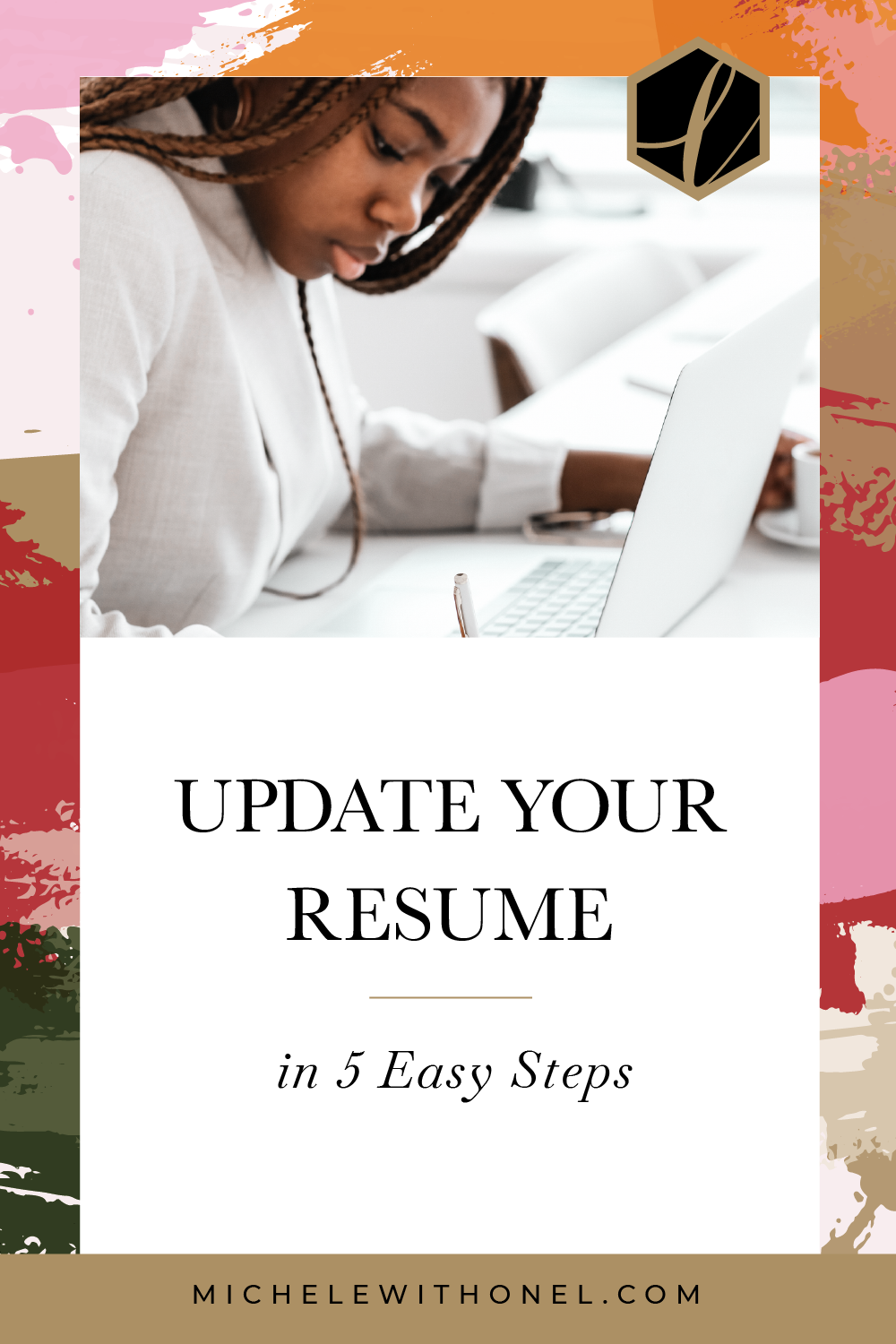
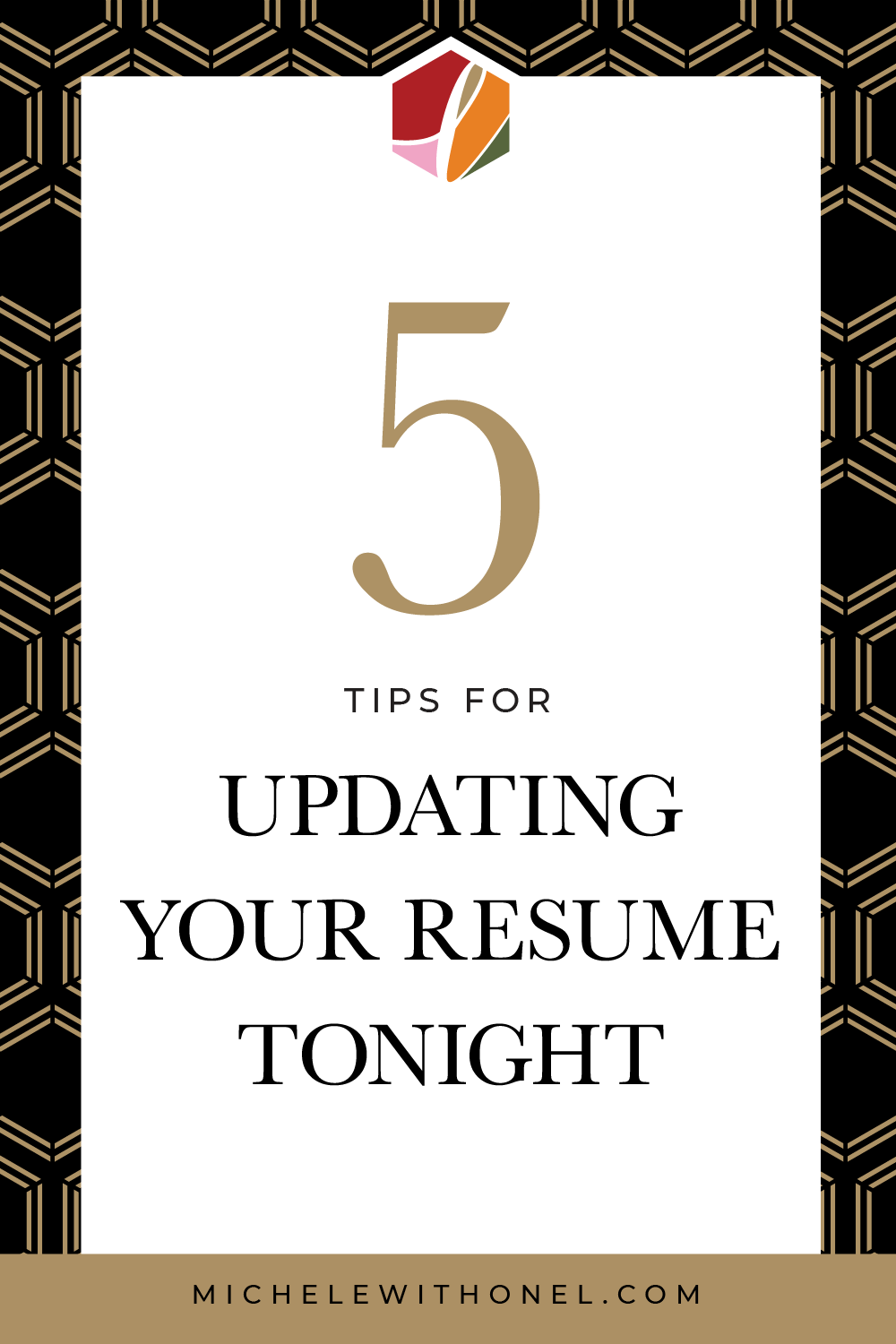
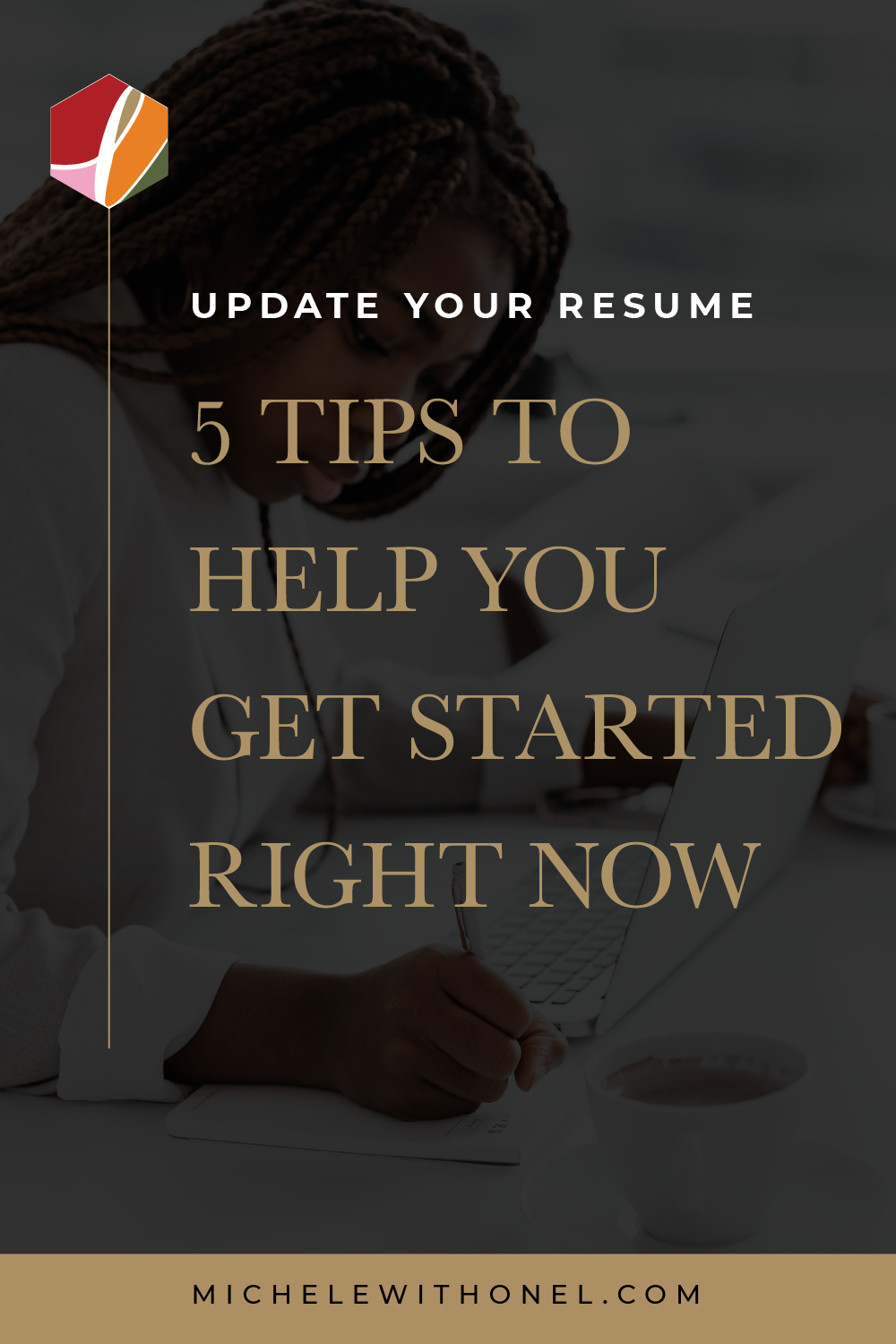
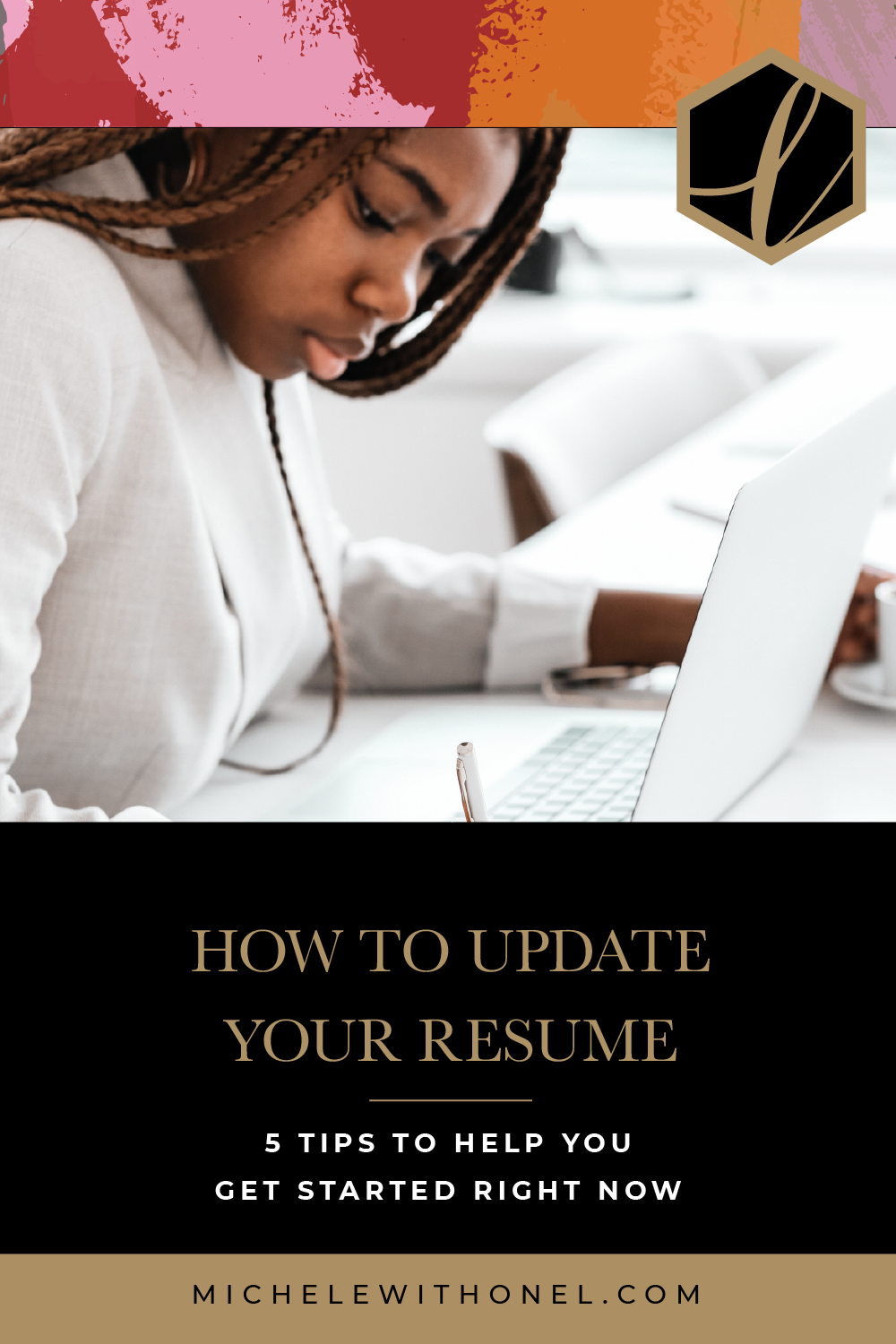
November 16, 2022
How to Update Your Resume [and 5 Tips to Help You Get Started Right Now]
| 10 ways to instantly |
look better in photos
This FREE guide is your key to taking photos that make you look and feel amazing! Fill out the form below to get the 20+ page guide delivered to your inbox. You’ll also receive weekly emails from me with my best business, branding, and photo tips.